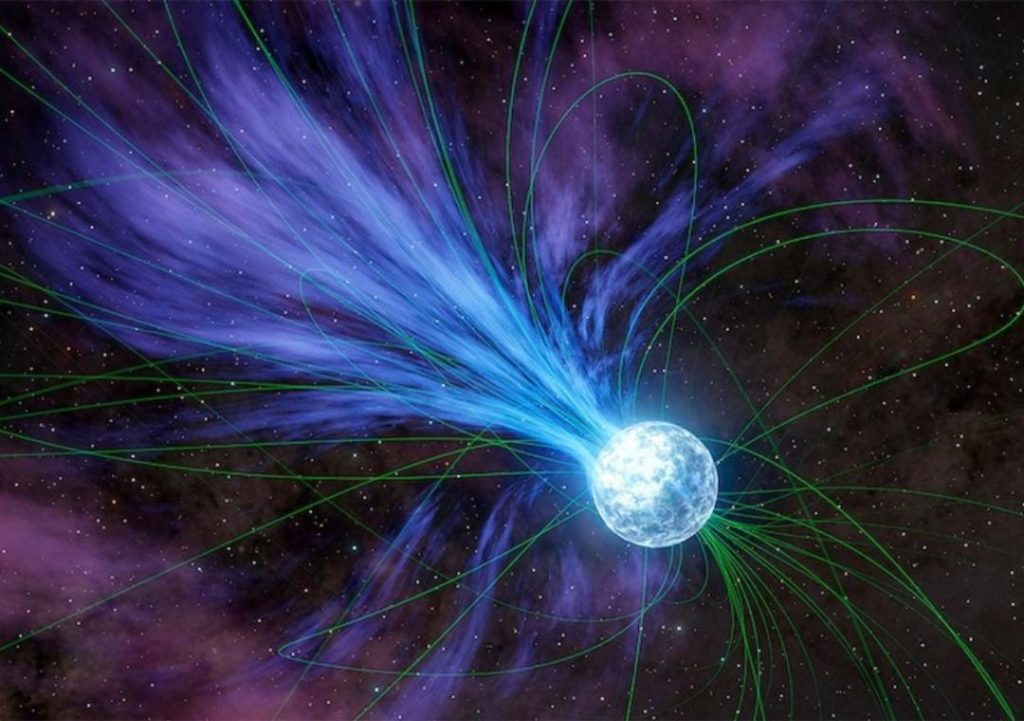
Gold & Platinum created through Neutron Stars’ Explosions: Study
Gold and platinum, two of the most valuable and coveted precious metals, have long been a subject of fascination for humans. From their use in jewelry and ornaments to their significance in scientific and industrial applications, these metals have played a crucial role in human history. But have you ever wondered where these metals came from? For centuries, humans have been mining and extracting these metals from the earth, but scientists have long been puzzled about their origin.
Recently, a groundbreaking study led by Columbia University student Anirudh Patel has shed new light on the creation of gold and platinum. According to the study, magnetars, or highly magnetized neutron stars, played a crucial role in the creation of these precious metals. But how did they do it? And what exactly are magnetars?
To understand the phenomenon, it’s essential to first comprehend what neutron stars are. Neutron stars are incredibly dense objects formed when a massive star collapses under its own gravity. They are so dense that a sugar-cube-sized amount of their material would weigh about the same as Mount Everest.
Magnetars, on the other hand, are a specific type of neutron star that is characterized by its incredibly strong magnetic field. These fields are so powerful that they can create intense flares and explosions that can be detected from millions of light-years away.
The study, published in the journal Nature, suggests that magnetars exploded approximately 20 years ago, releasing flares that contained gold and platinum. These elements were forged in the intense heat and energy released during the explosion, a process that is known as nucleosynthesis.
According to the researchers, the explosions occurred when the magnetar’s magnetic field became unstable and suddenly released its energy. This energy was so immense that it created a massive flare that heated the surrounding material to temperatures of millions of degrees. At these temperatures, atomic nuclei began to merge, creating heavier elements like gold and platinum.
The study also suggests that these explosions are relatively common, occurring approximately once per decade in the Milky Way galaxy and annually across the observable universe. This means that the creation of gold and platinum through magnetar explosions is an ongoing process that has been occurring for billions of years.
So, what does this mean for the origin of gold and platinum? In the past, scientists believed that these elements were created through the collision of neutron stars or the explosion of massive stars. However, the study suggests that magnetars are the primary source of these elements.
This discovery has significant implications for our understanding of the universe and the formation of elements. It suggests that the creation of gold and platinum is not a rare event, but rather a common occurrence that has been shaping the universe for billions of years.
So, the next time you wear a gold necklace or admire a platinum ring, remember that these precious metals have a cosmic origin. They were created through the explosive power of magnetars, and their existence is a testament to the incredible forces that shape our universe.
As we continue to explore the mysteries of the universe, we are constantly reminded of the awe-inspiring power and beauty of the cosmos. The discovery of gold and platinum created through magnetar explosions is just one of the many examples of the incredible wonders that await us as we delve deeper into the universe.
In conclusion, the study led by Columbia University student Anirudh Patel has shed new light on the origin of gold and platinum. The discovery that magnetars are responsible for creating these precious metals through their explosive power is a groundbreaking finding that has significant implications for our understanding of the universe.






